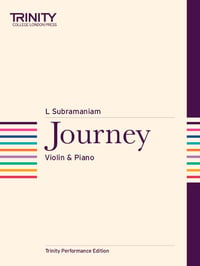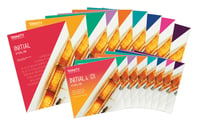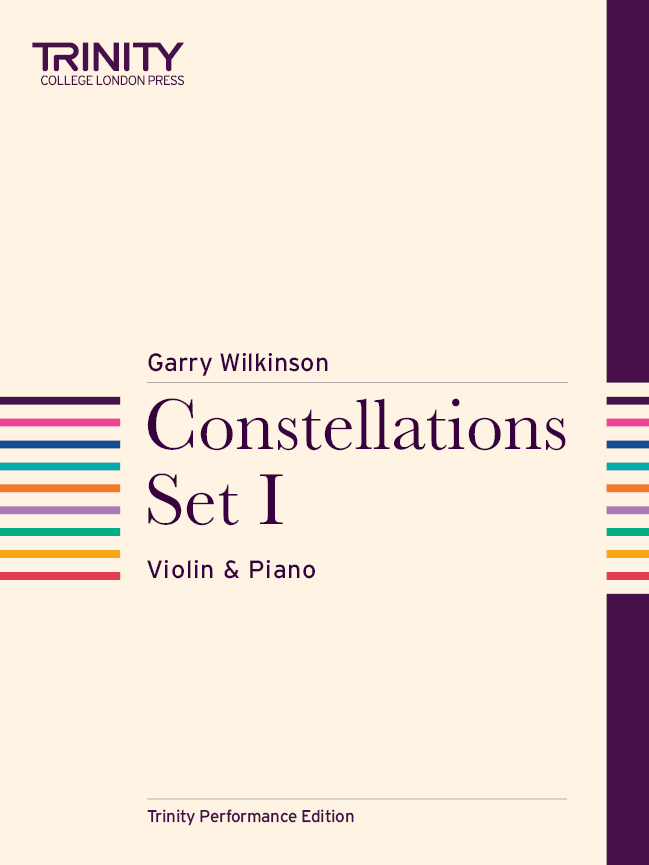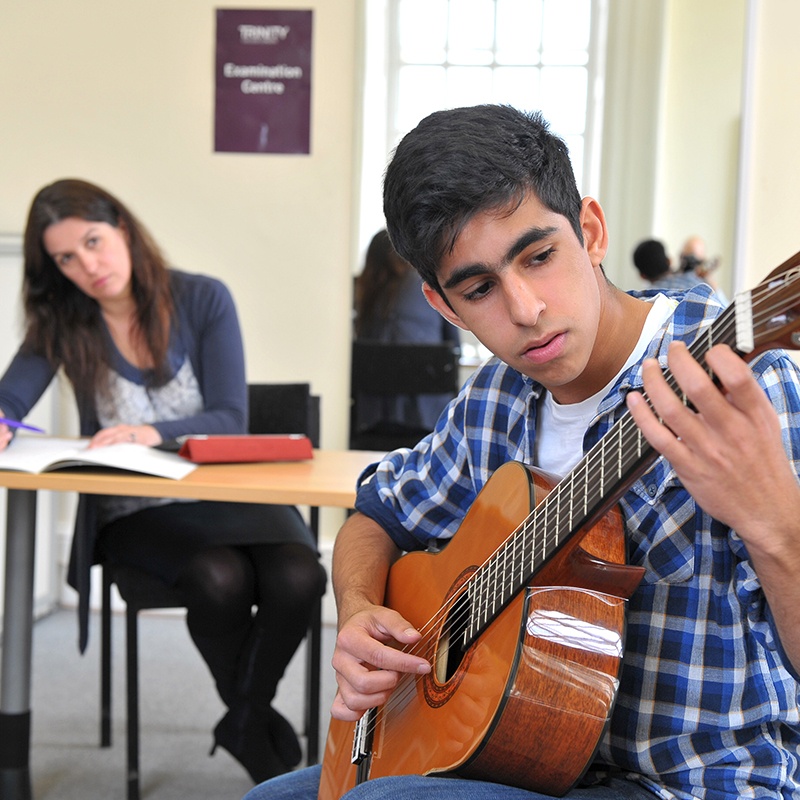Barbara Arens: Twelve Pieces — performance notes
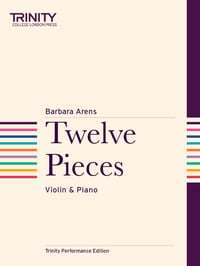
Barbara Arens is an enthusiastic piano teacher. After a concert career performing primarily as harpsichordist and organist, she now enjoys composing for her piano pupils. She loves to encourage her students to play chamber music with their siblings and friends, which is how this collection of violin and piano duos came about.
Performance notes
Cantabile
Both the piano and the violin should be playing as lyrically as possible here — meaning beautifully, smoothly, and with a singing tone. The repeated Gs and Ds provide good opportunity to develop tone while bowing on a single pitch. Try to maintain this cantabile singing tone whether playing mf, f or mp.
Donwell Abbey
I hope you’ve read a book or two by Jane Austen — or at least seen a film based on one of her novels. I find that her descriptions of country houses have as much charm as the characters themselves.
In her book Emma, she draws such a lovely, vivid picture of Donwell Abbey, the country house of Mr Knightley: it is so calm, so stately… Can you convey some of this in your performance? Even when the piano is playing semiquavers, it is never hectic or rushed, but merely the wind in the trees. All expression and movement must be strictly within the bounds of good taste as approved of in 1815!
Doric Dance
Nothing dainty or lyrical here! Pluck the pizzicatos at the beginning and end as loudly as you can. The melody and the big broken chords beginning in bar 20 should have a nice ‘pirate-y’ sound!
Fat Cat Boogie
Are you a cat person? (I’m more of a dog person, myself!) If you love cats, then just picture your favourite kitty mewing sweetly — and at the repeat, try to make your mewing even more irresistible. But if you don’t like cats, no problem: you can portray a really mean, nasty fat cat, and at the repeat — even meaner and nastier! Meow!
A Bit of Pop
In the first four bars, the violinist is playing around with a little musical idea, very freely — you’re not quite sure how the idea should develop. And then all of a sudden: ‘Got it!’ and away you go! Rhythm and steady tempo are extremely important — the quavers remain the same tempo (about quaver = 240) for the whole piece (except the introduction), regardless of the time signature saying C or 6/8. Have fun with the syncopations — try to enjoy coming in ‘too late’ in bars 7 and 30!
Galloping in the Wind
This was originally written for two friends who love playing music together, and who both loved horses! Make sure your horse is galloping — not just trotting or cantering! You’re going to have to play very loudly from about bar 21 to be heard above the piano.
Irish Legend
This was composed for two incredibly musical brothers to play in a competition (where they did very well!). But the brother who was my piano pupil couldn’t reach an octave — that’s why there are so many fifths in the piano part. The Lento sections can be as slow and as free as you like. Molto patetico means ‘with a lot of feeling’. Try exaggerating how much expression you put in — it can’t be overdone! The quick parts have an Irish jig kind of rhythm and drive to them. Then the central section is a complete contrast. I’ve used a traditional Irish folk song ‘Bruach na Carraige Baine’ (‘The Brink of White Rocks’) and made it into a lyrical duet between the violin and piano: sometimes the violin has the theme, sometimes it plays an accompaniment for the piano which is playing the melody. After the free and accelerating connecting section: a furious ending! Lots of energy, please!
Silent Film Rag
Have you ever seen a silent film, maybe with Buster Keaton or Charlie Chaplin? There’s always music in the background, underlining what’s going on in the film. That’s what kind of music this is: we can picture Chaplin waddling down the street with his funny walk, twirling his cane cheerfully — but what happens in bar 10? Uh-oh! Is that a baddie peering around the corner? Or does he slip on a banana peel? Or walk into a street lamp? (These things are constantly happening in silent movies!) But at some point (when?),
all is well again and there is a happy ending!
Postcard from Budapest
In this piece I was thinking more of the sometimes rather brutal rhythmic music of the Hungarian composer Bartók, rather than of the more traditional music we know from Liszt’s and Brahms’ Hungarian-inspired pieces. The whole first ‘A’ section is quite dry and the focus is on the rhythm. When playing the pizzicatos play them loudly and brutally and think: ‘I’m not playing a violin — I’m playing percussion!’ The ‘B’ section is then all the more contrasting. Play as beautifully and lyrically as possible before going over to the shimmering tremolos. Then back to the ‘A’ section — keep up the energy till the very end!
Rondo Furioso
Two very musical sisters were the first to try out this piece. They were always playing quiet, delicate pieces, but I wanted to give them something wild and furious to get their teeth into! Any you know what? They really did! So you, too, please be as extroverted and unrestrained as possible!
Souvenir from Athens
I’ve based this piece on the Sirtaki dance. This was actually ‘invented’ in 1964 for the film Zorba the Greek, but it’s based on old folk dances. Once, when I was in a little restaurant in Athens, some men started playing on their bazoukia — the Greek equivalent of guitars — and several men spontaneously danced the Sirtaki to the music: beginning very slowly, and gradually getting faster and faster. I’ve added a contrasting slower middle section with a sad folk-song-like feel. As so often in Greek folk music, the two upper voices move in sixths and thirds together. Then: back to the Sirtaki for an electrifyingly fast finish!
Scherzo Achoo!
Do you suffer from hay fever? Or have you had a terrible cold? Then you’ll be able to understand what this piece is about — not just sneezing, but that terrible not-yet-but-almost-sneezing feeling! I had such a great time with a violinist friend giving me all sorts of ideas about what weird stuff you can do with a violin. Have fun with all the crazy things you can do!
Performance notes by Barbara Arens



